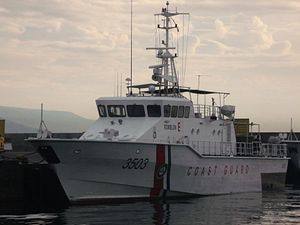Not unlike some other neighboring Southeast Asian states, the Philippines has been placing an increasing emphasis on the development of its coast guard (See: “Assessing Malaysia’s Coast Guard in ASEAN Perspective”) as it seeks to boost its overall capabilities, which still remain quite limited to cover over 7,000 islands with a tenth of the world’s coastline. Under former President Benigno Aquino III, the Philippine Coast Guard (PCG) has seen boosts in its level of funding, personnel and equipment, as a result of both internal capacity-building as well as help from countries such as Japan and the United States.
But since Philippine President Rodrigo Duterte took office last June, there have been questions about what this might mean for the development of Philippine defense modernization in general as well as the various services including the PCG more specifically (See: “What’s Next for Philippine Military Modernization Under Duterte”). So far at least, the relatively greater attention placed on addressing challenges in the Sulu-Sulawesi Seas as well as the Marawi crisis that erupted in May appears to have catalyzed Manila’s emphasis on its coast guard capabilities, with the PCG assuming some new responsibilities (See: “Philippines Coast Guard in the Spotlight Amid Islamic State Terror Threat”).
Apart from this general trajectory, a more specific indicator of the PCG’s evolution is the level of funding allocated to it. And though it is still very much early days, we are beginning to get a sense of what this might look like.
This week, Johnny Pimentel, the chairman of the House Committee on good government and public accountability, said that the Duterte administration had given the PCG a 6.7 billion peso budget for 2018. Of that allocation, 3.1 billion pesos would be given to the PCG itself, while the other 3.6 billion pesos would be given to the Department of Transportation under which it is lodged (as I have noted before, the historical evolution of the PCG, which officially dates back to its founding back over a century ago with shifting designations and roles, is an interesting story in and of itself).
The funding, Pimentel said, would help pay for both existing and new acquisitions, as Philippine officials including Duterte himself have previously indicated. These include ten new 44-meter patrol boats from Japan (five of which have been delivered); four 24-meter fast boats set to arrive in a year; an 82-meter boat to be delivered in 2019; two 94-meter, high-endurance boats for delivery in 2020 and 2021; firearms; helicopters; high-performance rigid inflatable boats (RIBs); and smaller watercrafts.
Pimentel rightly focused his statement not just on new equipment, but on personnel as well. The PCG’s personnel has long fallen short of what is needed, and efforts to boost recruitment under the Aquino administration, while somewhat successful, had nonetheless fallen below the target of 10,000 personnel (and, further out, 10 personnel per substation or detachment by 2020). This personnel challenge, it is worth remembering, only increases with the arrival of new vessels, which require people to man them. Significantly, Pimentel said the 2018 budget would include hiring 4,000 new PCG personnel, an increase from 8,930 this year to 12,930 in 2018 in terms of authorized positions for uniformed personnel.
Though much will still need to be done even after these capability boosts, they will not be insignificant if they are achieved and followed through on given the vast array of challenges the Philippines has to confront, from piracy to terrorism to a growing Chinese presence in the South China Sea. As developments evolve, it will be worth keeping a close watch on not just the headlines, but more concrete indicators of capability such as budget allocations.

































